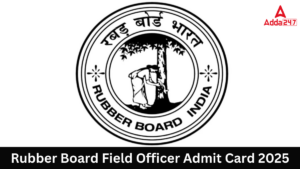Reasoning Questions for SBI PO Prelims 2019:
Reasoning Ability is an onerous section. With the increasing complexity of questions, it becomes hard for one to give it the cold shoulder. The only way to make the grade in this particular section in the forthcoming banking exams. And, to let you practice with the best of the latest pattern questions, here is the Adda247 Reasoning Quiz based on the exact same pattern of questions that are being asked in the exams.
Directions (1-5): In these questions, relationship between different elements is show in the statements. The statements are followed by conclusions. Study the conclusions based on the given statements and select the appropriate answer:
Q1.
Both conclusions I and II are true
Either conclusion I or II is true
Only conclusion I is true
Neither conclusions I nor II is true
Only conclusion II is true
Q2.
Both conclusions I and II are true
Only conclusion II is true
Neither conclusion I nor II is true
Either conclusions I or II is true
Only conclusions I is true
Q3.
Both conclusion I and II are true
Either conclusion I or II is true
Neither conclusion I nor II is true
Only conclusion I is true
Only conclusion II is true
Q4.
Only conclusion II is true
Either conclusion I or II is true
Both conclusion I and II are true
Neither conclusion I nor II is true
Only conclusion I is true
Q5.
Neither conclusion I nor II is true
Both conclusions I and II are true
Only conclusion II is true
Either conclusion I or II is true
Only conclusion I is true
Directions (6-10): In the following questions, the symbols @, #, %, $ and © are used with the following meaning as illustrated below-
‘P#Q’ means ‘P is neither greater than nor equal to Q’
‘P©Q’ means ‘P is neither equal to nor smaller than Q’
‘P%Q’ means ‘P is neither smaller than nor greater than Q’
‘P$Q’ means ‘P is not smaller than Q’
‘P@Q’ means ‘P is not greater than Q’
Now in each of the following questions assuming the given statement to be true, find which of the three conclusions I, II and III given below them is/are definitely true and give your answer accordingly.
Q6. Statements:
M © S, U % X, S $ U, X @ T
Conclusions:
I. T © X
II. U % T
III.X © M
None is true
Only I is true
Only III is true
Either I or II are true
All are true
Q7. Statements:
A $ B, B % E, G © E
Conclusions:
I. G © B
II. E @ A
III. A © G
Only I and III are true
Only II and III are true
Only I and II are true
All are true
None of these
Q8. Statements:
K $ M © O @ R © T
Conclusions:
I. K © R
II. O # K
III.R © K
None is true
Only II is true
Only I and II are true
Only II and III are true
All are true
Q9. Statements:
E $ N % C # D @ F
Conclusions:
I. N#F
II. E©D
III. F%N
None is true
Only I is true
Only III is true
Either I or II are true
All are true
Q10. Statements:
S @ R % W $ T © V
Conclusions:
I. S # T
II. S $ T
III. W # V
Only I and III are true
Only II and III are true
Only I and II are true
Either I or II are true
None of these
Q11. In
which of the following expression shows that, ‘M≥O’ and ‘Z<Y’ being
definitely true?
which of the following expression shows that, ‘M≥O’ and ‘Z<Y’ being
definitely true?
Q12. Which of the following symbols should replace the sign (?) and (*) in the given expression in order to make the expression Q>X definitely false and Z>Q is definitely true?
Z (?) Y > Q (*) M ≥ X
>, >
≥, >
<, =
>, =
None of these
Q13. Which of the following symbols should replace the sign (?) and (#) in the given expression in order to make the expressions A≥Y definitely true and
K<P
definitely false?
definitely false?
K < M ? A = P # Q ≥ Y
≥, >
≥, >
<, >
>, ≥
=, >
None of these
Solution:
K < M ≤ A = P ≥ Q ≥ Y
Q14. Which
of the following symbols should replace the sign (%) and (@) in the given
expression in order to make the expressions X<M and R≥Z definitely true?
of the following symbols should replace the sign (%) and (@) in the given
expression in order to make the expressions X<M and R≥Z definitely true?
X M ≥ Q % Z = X @ R
≥, >
≥, ≤
>, ≤
=, ≥
None of these
Solution:
P > M ≥ Q > Z = X ≤ R
Q15. Which of the following expression will be definitely false if the expression
‘A ≤ R < C = D ≥ E > B’ is definitely true?
‘A ≤ R < C = D ≥ E > B’ is definitely true?
C > A
D > B
B > C
E ≤ C
None is false
You may also like to Read:
- Check the Study related Articles Here
- Study Notes for All Banking Exams 2018
- Bankers Adda Daily Questions for SBI PO, IBPS PO Clerk & Bank Exams





 GA Capsule for SBI Clerk Mains 2025, Dow...
GA Capsule for SBI Clerk Mains 2025, Dow...
 The Hindu Review October 2022: Download ...
The Hindu Review October 2022: Download ...
 Rubber Board Field Officer Admit Card 20...
Rubber Board Field Officer Admit Card 20...







